View From the Couch: Impulse, The Ring Collection, Shadow Magic, etc.
View From The Couch is a weekly column that reviews what’s new on Blu-ray, 4K and DVD.
 FILM FRENZY
FILM FRENZY
Your source for movie reviews on the theatrical and home fronts
View From The Couch is a weekly column that reviews what’s new on Blu-ray, 4K and DVD.
Naomi Watts in The Ring (Photo: Shout! Studios & Paramount)
By Matt Brunson
(View From The Couch is a weekly column that reviews what’s new on Blu-ray, 4K and DVD. Ratings are on a four-star scale.)

CARRIE (2013). Brian De Palma’s 1976 adaptation of Stephen King’s novel is one of the great horror classics of the past half-century (see review here), as well as marking one of those rare occasions when the movie was better than the book. There wasn’t really a need for a remake, but then again, there wasn’t really a need for remakes of The Fly and The Thing, and those later versions both proved to be excellent. That’s definitely not the case with this wan retelling, which pales in practically every department when compared to the ’76 model. As before, Carrie White (Chloë Grace Moretz) is the reclusive teenager who’s tormented by both her classmates and her unhinged, Bible-thumping mother (Julianne Moore). But when she discovers that she possesses telekinetic powers, matters really begin to heat up. Director Kimberly Peirce and scripters Lawrence D. Cohen and Roberto Aguirre-Sacasa modernize the tale by pushing the anti-bullying angle, yet somehow the cruelty and catharsis feel less potent than before. Moretz (overcoming her miscasting) and Moore are quite good but can’t top Sissy Spacek and Piper Laurie, and it’s lamentable that Moore has now appeared in two needless horror remakes (the other being the atrocious Psycho update). As expected, more is less when it comes to the overblown CGI effects, and some minor plot tinkering (particularly involving the climactic prom sequence) only serves to weaken the material.
Extras in the 4K + Blu-ray edition include audio commentary by Peirce; a making-of featurette; an interview with production designer Carol Spier; deleted and extended scenes; and a truly awful alternate ending that will elicit laughter rather than screams.
Movie: ★★
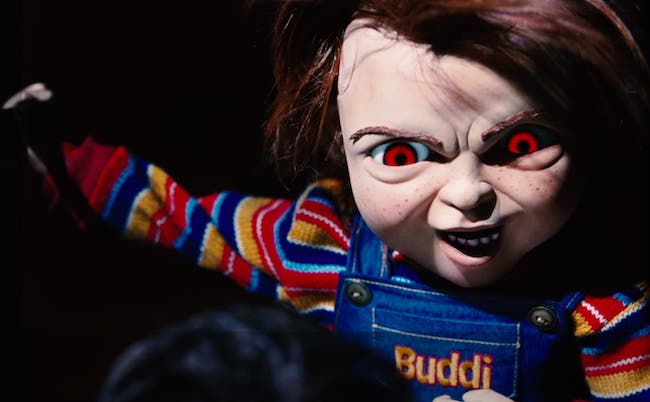
CHILD’S PLAY (2019). Conceived by Don Mancini, directed by Tom Holland, and scripted by Mancini, Holland, and John Lafia, 1988’s Child’s Play was a nifty horror yarn that introduced the world to Chucky (voiced by Brad Dourif), a “Good Guy”-brand doll possessed by the spirit of a serial killer following a voodoo incantation. This lamentable remake (which tellingly received no input from Mancini or Holland) follows the same general plot, as single mom Karen Barclay (Aubrey Plaza) gives her son Andy a Buzz Lightyear — wait, wrong Andy — gives her son Andy (Gabriel Bateman) a damaged Buddi doll that ends up going on a homicidal tear. But this Chucky (voiced by Mark Hamill) isn’t evil because he harbors the soul of a mass murderer; instead, he’s evil because a disgruntled factory employee disabled all of his AI safety features. Ooh, scary! It’s a ludicrous concept, although I suspect it might lead some susceptible viewers to worry that Alexa might burn the house down or, even worse, cancel their Netflix and Amazon Prime subscriptions. This version is hurt by a scarcity of chills and little internal logic at play, and the story modifications do it no favors, particularly the risible climax in which shoppers are bombarded by Chucky-controlled toys. As for the look of Chucky? The poor design means he’s as creepy before he’s possessed as after, and the thought of children lining up to buy this hideous doll is only slightly more believable than the thought of 5-year-olds queueing up to purchase a Che Guevara T-shirt or a DVD of Antonioni’s The Passenger.
Extras in the 4K + Blu-ray edition include audio commentary by director Lars Klevberg; a making-of piece; and the theatrical trailer.
Movie: ★½
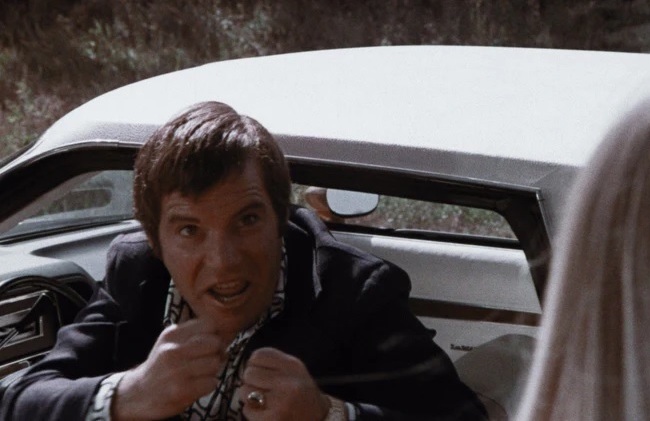
IMPULSE (1974). A few name actors — Strangers on a Train’s Ruth Roman, Goldfinger’s Harold Sakata, and the one and only William Shatner — are brought together for this Florida-shot cheapie that’s nowhere near as sleazy as its reputation promises. Its standing as an exploitation flick is mainly predicated on the presence of grindhouse mainstay William Grefé and Shatner’s exuberant emoting — otherwise, it’s a rather ordinary thriller in which psychotic ladies’ man Matt Stone (Shatner) dates wealthy women and then murders them. Shatner’s performance is interesting, to say the least — for the first hour, he’s effective in some scenes and awkward in others. But all hell — and Shatner — breaks loose for the final stretch, with the actor bouncing around like a chimpanzee on speed. In short, the level of the drama subsiding and the camp rising is in direct correlation to how high Shatner lifts his eyebrows in any given scene.
No matter how one rates the film, Grindhouse Releasing’s Blu-ray edition is a 4-star stunner. The outfit didn’t just go the extra mile in securing groovy bonus features — it apparently went to infinity and beyond to nab them. Traditional extras include audio commentary by Grefé; interviews with Grefé; a Q&A session with Shatner; and a piece that looks at Shatner’s eccentric filmography. But there’s also a brief behind-the-scenes bit showing Shatner saving Sakata from accidentally hanging himself (complete with commentary). There are a trio of industrial pieces involving Grefé: one with Shatner promoting filmmaking investments, one with Lauren Bacall doing the same, and one with Shatner plugging Bacardi. There’s TV news footage of Grefé’s involvement with the James Bond flick Live and Let Die. There are Grefé’s filmmaking seminars. There are two additional pics directed by Grefé: 1966’s The Devil’s Sisters and 1973’s G-rated The Godmothers, with Mickey Rooney. And there’s more, more, much more.
Movie: ★★
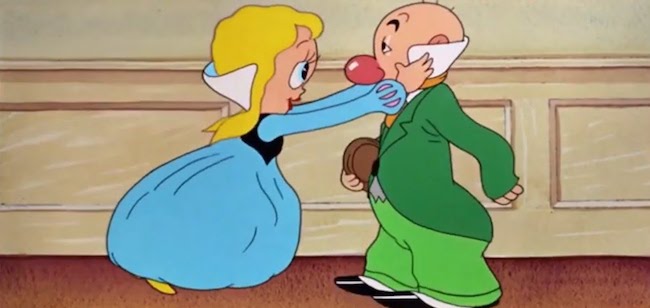
LOONEY TUNES COLLECTOR’S CHOICE: VOL. 3 (1934-1964). Volumes 1 and 2 were released last summer and last winter respectively, so 2024 is getting an early jump with this spring collection of 25 more cartoons from what many would consider the medium’s Golden Age. As before, obscurities rule the day, as this series has mainly been about bringing lesser known entries to the attention of fans. Not that the series superstars don’t make occasional appearances: This batch offers four toons starring Bugs Bunny, three featuring Daffy Duck, two apiece for Porky Pig and Elmer Fudd, and solo showings for Wile E. Coyote & Road Runner, Tweety & Sylvester, Yosemite Sam, and Foghorn Leghorn. This batch contains a larger number of weaker works than the previous sets, although there’s still much to cherish — Daffy is in especially good form as he tangles with a bull in Mexican Joyride and portrays an Irish private eye in the controversial and long unseen China Jones, with Porky basically playing Charlie Chan and the non-PC final gag, missing from TV prints, finally restored. Then there are the ones whose very titles are puns or take-offs of existing properties: Hop, Skip and a Chump, War and Pieces, and, probably my favorite of the groan-worthy monikers, Of Rice and Hen. And long before Batman’s Egghead, there was Looney Tunes’ Egghead, who never quite caught on but does appear in one of the animated shorts collected here.
There are no Blu-ray extras, only a warning on the back cover that this collection “Is intended for the Adult Collector and May Not Be Suitable for Children” (the same disclaimer appeared on the first two volumes as well).
Collection: ★★★
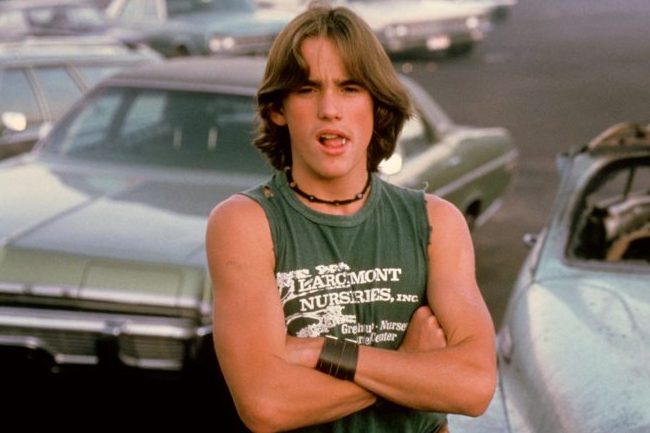
OVER THE EDGE (1979). The original poster art for Over the Edge (reproduced on the Blu-ray cover) makes it look like a horror movie about possessed children, something similar to the classic Village of the Damned and its sequel, Children of the Damned. While that’s not the case, it wouldn’t be entirely inaccurate to call it a horror film, in the sense that it’s a movie apt to disturb or even frighten adults. The scary part is that it’s based on a true story, one that unfolded in a California town. The film switches the setting to Colorado, and, as the opening scrawl informs, “In 1978, 110,000 kids under 18 were arrested for crimes of vandalism in the U.S. This story is based on true incidents occurring during the 1970’s in a planned suburban community of condominiums and town homes, where city planners ignored the fact that a quarter of the population was 15 years old or younger.” That’s an awful lot of disaffected youth, and with the distracted adults catering to their own desires (plans for a movie theater and bowling alley are scuttled to build more office buildings) and leaving the teens to fend for themselves, it’s only natural that they would turn to drugs and gravitate toward crime. Despite the sympathetic slant toward the kids, this isn’t a simplistic “us vs. them” screed — the adults are clueless but really do care, and the “heavy” of the piece, a police sergeant (Harry Northup), continues to try to reach the teens even after most others would have given up. Matt Dillon makes his impressive film debut as the rebellious Richie, and that’s Vincent Spano making his debut as a bully. Killer soundtrack, too: Cheap Trick, the Ramones, the Cars, and more.
Blu-ray extras include audio commentary by director Jonathan Kaplan, producer George Litto, and scripters Charlie Haas and Tim Hunter; a retrospective documentary; and an interview with Kaplan.
Movie: ★★★
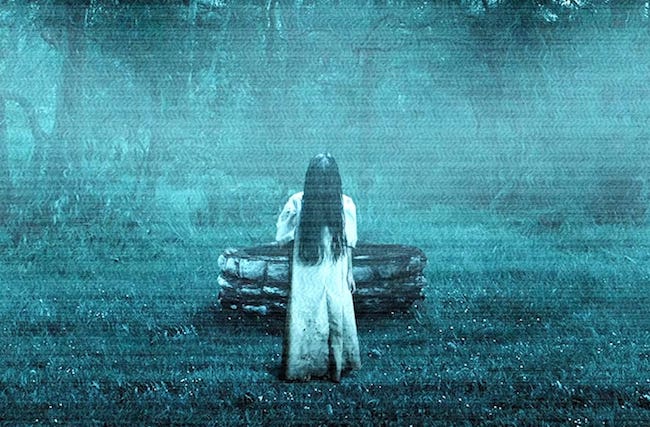
THE RING COLLECTION (2002-2017). In the beginning, there was Japanese author Koji Suzuki’s 1991 Ringu, which became so popular that it led to additional novels, comic books, TV shows, video games, and more. And, of course, there are the movies: 1998’s Ringu was highly successful and highly influential, spawning a number of sequels in Japan and, inevitably, the Hollywood remake and its sequels. Arriving in a new 4K box set is The Ring Collection, which brings together the three American flicks.
As with the Japanese original, The Ring (2002) centers around the existence of a videocassette that causes death to anyone who dares watch it. So what exactly is on this terrible tape? An episode of Joanie Loves Chachi? Footage of the Liza Minnelli-David Gest wedding? The torturous Vanilla Ice bomb Cool As Ice? Actually, none of the above; instead, it turns out to be a series of grainy, bizarre images that would be right at home in a music video by, say, Nine Inch Nails or Metallica. After her teenage niece (Amber Tamblyn) and her friends mysteriously die exactly seven days after viewing the video, reporter Rachel Keller (Naomi Watts) suspects this may be more than an urban legend. So she tracks down the tape and watches it, as do her ex (Martin Henderson) and their young son Aidan (David Dorfman). In essence, they’re all doomed, but rather than return their Blockbuster membership cards and wait patiently for the end, they study the footage for hidden clues that might save their lives. The quirky light touch that had served director Gore Verbinski well on Mouse Hunt and The Mexican (and, later, a couple of the Pirates of the Caribbean flicks) has hampered him here: For a movie built around a piece of film containing unsettling images, The Ring is itself a rather tame undertaking, never building the finger-curling sense of dread that’s demanded by the material. At the same time, he clearly respects the genre, meaning that we’re not bombarded by the usual cheap scares and smarmy in-jokes that all too often strangle works of this sort. And he scored a casting coup by landing Watts in her first appearance since her amazing breakthrough performance in the previous year’s Mulholland Drive. She makes an admirable heroine, although she has more chance defeating Death than conquering the script’s numerous plotholes.
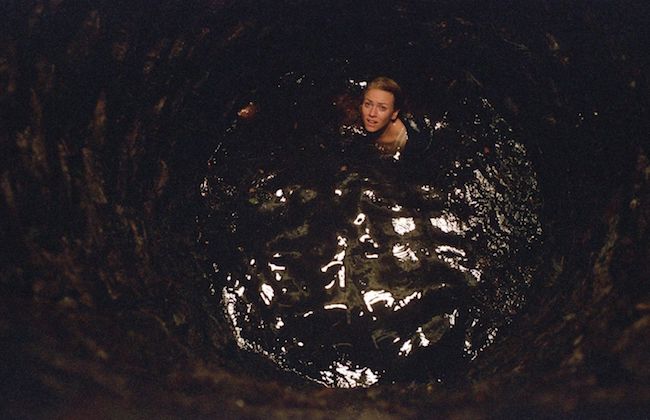
In this age of rapid technological advances, you would think that the videocassette at the center of the 2002 sleeper hit would have been replaced in The Ring Two (2005) by a DVD of death. Alas, that’s not the case; instead, the movie focuses on digging up the same sort of unanswered questions as its predecessor (chief among them: Who watched Aidan’s tape?). Rachel and Aidan have moved from Seattle to a quiet Oregon town, but the spirit of Samara, the demonic child controlling the tape, won’t leave them alone, as she seems intent on taking over Aidan’s body. Dorfman is such a monotonous performer that the addition of some Exorcist-inspired pea-green vomit might at least have helped us determine exactly when he’s being possessed. Then again, such a gesture of goodwill would be little more than a Band-Aid applied to a hemorrhaging film whose greatest sin is that it’s frequently tedious. Still, the final scenes wrap up the saga quite nicely … so of course there had to be a third installment.
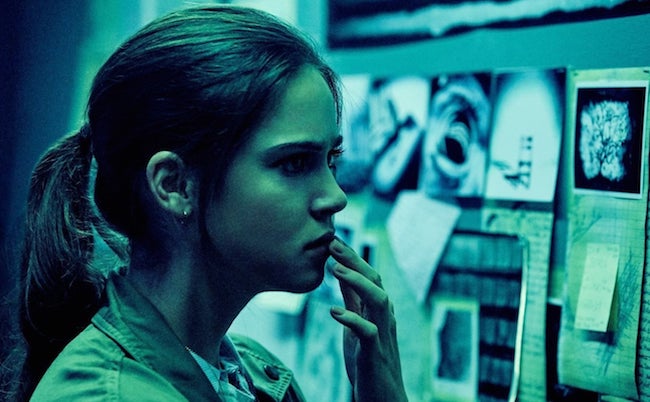
Appearing 12 years after Part Deux, Rings (2017) finds a roster of new characters trying to effectively deal with Samara’s fatalistic temper tantrums. College professor Gabriel Brown (Johnny Galecki) is the one who gets the ring rolling, as he believes the cassette ultimately holds the key to life after death. He’s wrong, of course, which means he puts a lotta students at risk of being hollowed out by Samara. A different approach to the saga gooses the early scenes, but the repetitive nature of the story soon takes over, and it ends with a lame twist that suggests the studio hasn’t hung up on this franchise just yet.
Extras in the 4K + Blu-ray set include the 2005 short film Rings, which leads into the beginning of The Ring Two; making-of featurettes; and deleted scenes.
The Ring: ★★½
The Ring Two: ★★
Rings: ★★
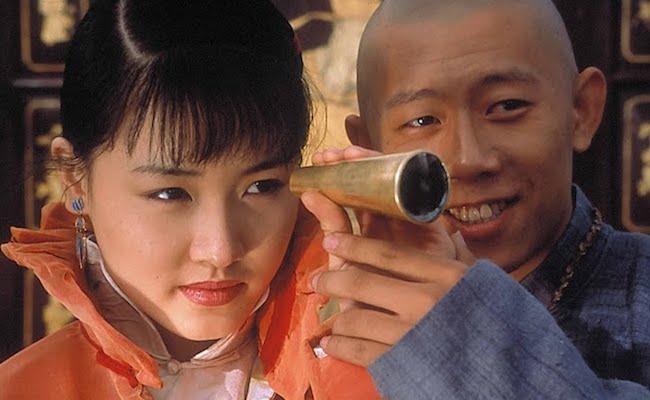
SHADOW MAGIC (2001). It’s depressing to note that after 120-plus years of cinema — unquestionably one of the great innovations of recent centuries — we find ourselves having to sit through junk like Halloween Kills and Space Jam: A New Legacy. This lovely film, loosely based on real events, transports us back to a pre-blockbuster time full of genuine promise: 1902 China, when a Westerner, Englishman Raymond Wallace (Jared Harris), arrives in Beijing eager to introduce the locals to a newfangled invention known as moving pictures — or “shadow magic,” as it quickly becomes known in the region. Some embrace this miraculous invention — that would include Liu Jinglun (Xia Yu), a portrait photographer who lends his services to Raymond. Others are disturbed by its direct threat to long-held traditions — that would include Lord Tan (Li Yusheng), a Peking Opera star who feels this new medium lacks the style, finesse, and artistry of old-fashioned entertainments (sit through something like The Love Guru and it’s easy to see his point). Yet everyone is mesmerized by the wondrous and unfamiliar sights it presents of life outside of China — footage of a Brit with his wife and baby even leads a couple of locals to state that they thought foreigners were only soldiers, not family men with feelings. Directed and co-written by Ann Hu, Shadow Magic is inclusive enough to allow all sides to share their points of view and embracive enough to take time out for a budding romance between Liu and Lord Tan’s daughter Ling (Xing Yufei). Yet its greatest strength rests in its ability to make us see this towering art form in all its virginal glory.
Blu-ray extras consist of audio commentary by Hu and the theatrical trailer.
Movie: ★★★½
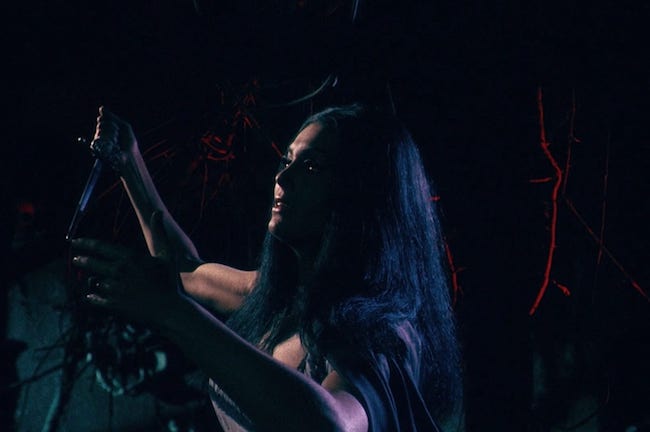
THE WHIP AND THE BODY (1963). Christopher Lee often stated that he felt his best performance could be found in what he declared was his best film, 1973’s The Wicker Man (reviewed here). In addition to his English-language efforts, Lee also appeared in a number of international productions (it didn’t hurt that he could speak eight languages), and, of these, he reportedly held Mario Bava’s The Whip and the Body in particularly high esteem. Initially playing the U.S. in an edited cut called What! (not to be confused with Roman Polanski’s awful 1972 What?), this Gothic yarn casts Lee as Count Kurt Menliff, who returns to his family home after a scandal drove him away years earlier. His former fiancée Nevenka (Daliah Lavi) is set to marry his brother Christian (Tony Kendall), but what no one at the castle realizes is that the relationship between Kurt and Nevenka was steeped in sadomasochistic behavior, and that Nevenka still desires to be whipped by her former paramour. After Kurt is found murdered, it appears that he’s able to return in ghostly form to continue to torture/titillate Nevenka. This often plays more like soap opera than supernatural thriller — Dark Shadows would have worked as a title for this, too — but it’s the eerie atmospherics, not the plot particulars, that take center stage. As was often the case, Bava’s shot selections are highly effective: When Kurt’s hands reach out of the darkness and straight at the viewer’s throat, it’s a startling visual — akin to a William Castle gimmick, perhaps, or The Ring’s Samara climbing out of your TV set. And as was always the case, his color schemes provide a richness that only enhances the fantastical situations.
Blu-ray extras include audio commentary by author Tim Lucas (Mario Bava: All the Colors of the Dark) and the French trailer.
Movie: ★★★
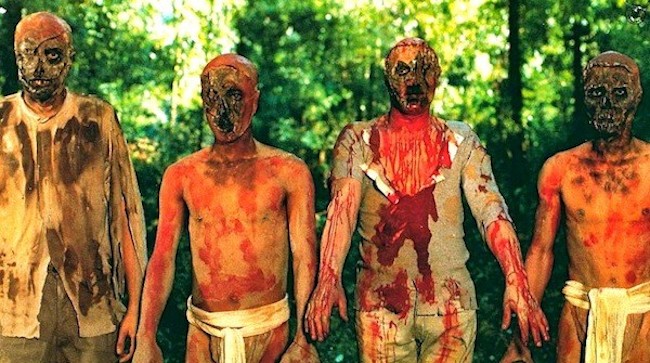
ZOMBIE HOLOCAUST / DOCTOR BUTCHER, M.D. (1980). As actor Ian McCulloch notes in an interview included in this 4K edition, Zombie Holocaust (aka Zombi Holocaust) could easily have been called Cannibal Holocaust had another Italian gorefest from the period not already snagged that title. Either moniker gives a pretty good indication of what to expect from this exploitation yarn (banned, like many others from that time, in numerous countries across the globe) in which a small group investigating odd events stateside traces the mystery to a remote island, only to discover it’s overrun by flesh-eating natives and shambling zombies. Zombie Holocaust was re-edited and renamed Doctor Butcher, M.D. (the M.D. standing for Medical Deviate) for the American grindhouse circuit, and the fact that the title and the tagline (“He is a depraved, sadistic rapist; A bloodthirsty, homicidal killer … and He Makes House Calls!”) completely misrepresented the picture didn’t stop it from being embraced by audiences appreciative of the outlandish makeup designs as well as the imaginative deaths and dismemberments on view. If McCulloch looks familiar, that’s because he also starred in an even more notorious grindhouse fave, the 1979 Italian hit Zombie.
Blu-ray extras include an interview with McCulloch; a discussion of Zombie Holocaust director Marino Girolami by his son, filmmaker Enzo G. Castellari; “Experiments With a Male Caucasian Brain (… and other memories of 42nd Street),” an entertaining illustrated essay; and theatrical trailers.
Both Versions: ★★
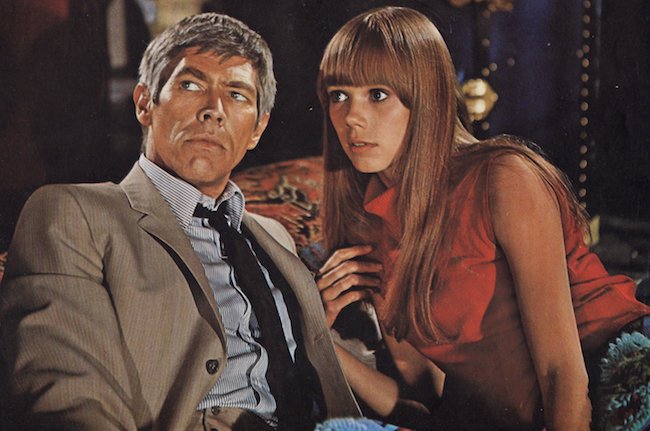
Short And Sweet:
THE PRESIDENT’S ANALYST (1967). Written and directed by Theodore J. Flicker, this one-of-a-kind oddity stars James Coburn as Dr. Sidney Schaefer, who becomes the psychiatrist for the President of the United States. His high-level clearance panics some in the government; meanwhile, foreign powers are sending their best agents to kidnap him in order to tap his brain. Some of the gimmicks no longer work, but there are some sizable laughs generously spread throughout. Godfrey Cambridge and Severn Darden make a wonderful tag team as, respectively, an American operative and a Russian agent who are good friends despite their jobs. Barry McGuire, then of the band Clear Light (employed in the picture) but best known for singing the anti-war anthem “Eve of Destruction,” offers some welcome low-key vibes as the leader of a hippie commune; he also contributes a pair of mellow tunes.
Blu-ray extras include film historian audio commentaries (including one by Tim Lucas) and the theatrical trailer.
Movie: ★★★
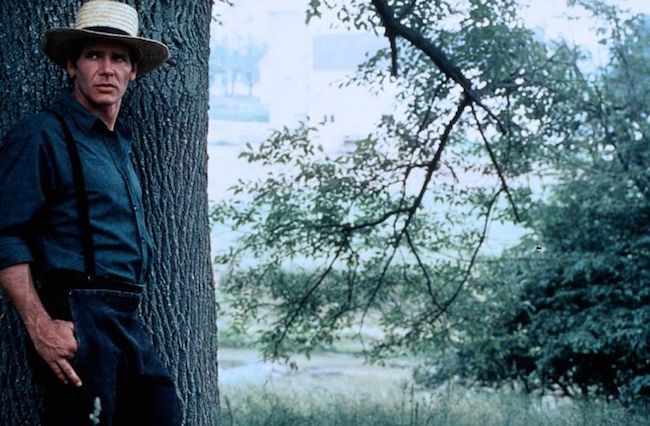
WITNESS (1985). This exceptionally fine film finds Harrison Ford earning his first (and, so far, only) Best Actor Oscar nomination as John Book, a Philadelphia detective who retreats into the Amish community to protect a widow (Kelly McGillis) and her young son (Lukas Haas) from corrupt cops. Maurice Jarre’s score is a standout, and the scene in which Ford and McGillis dance to “(What a) Wonderful World” is one of my all-time favorite instances of movie romance. Look for Viggo Mortensen in his film debut as an Amish farmer. Nominated for eight Academy Awards, including Best Picture and Best Director (Peter Weir), this box office hit earned statues for Best Original Screenplay (Earl W. Wallace, Pamela Wallace, and William Kelley) and Best Film Editing. Weir and Ford would reunite the following year for the criminally underrated drama The Mosquito Coast (still not on Blu-ray, let alone 4K).
There are no Blu-ray extras.
Movie: ★★★½
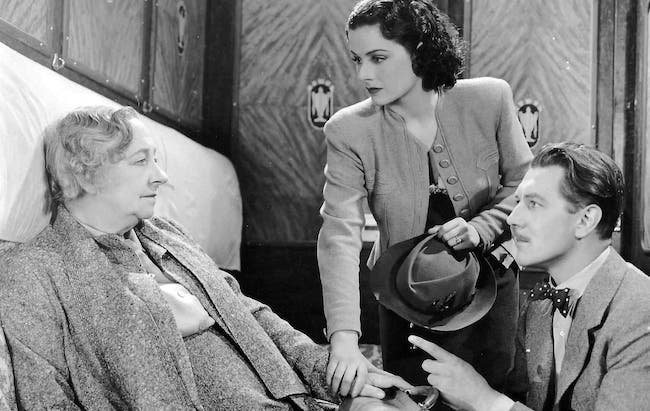
FROM SCREEN TO STREAM
THE LADY VANISHES (1938). The penultimate film Alfred Hitchcock made in his native England before he left for America — only 1939’s Jamaica Inn separated it from the 1940 Hollywood production Rebecca — The Lady Vanishes vies with 1935’s The 39 Steps as the greatest picture from his early UK years. Working from an exquisitely structured screenplay by Sidney Gilliat and Frank Launder, Hitchcock employs one of his favorite “toys,” the train (see also Strangers on a Train, Shadow of a Doubt, Number Seventeen, etc.), to maximum effect — never mind that the entire film was shot on a 90-foot-long set! — in this crisp comedy-drama in which young socialite Iris Henderson (Margaret Lockwood) befriends the elderly school marm Miss Froy (Dame May Whitty) while both are passengers on a locomotive barreling across Europe. But in an instant, Miss Froy disappears, and, for various reasons, the other passengers claim that they never saw such a person and that she must exist only in Iris’ mind. It’s up to a flirtatious music scholar (Michael Redgrave) to help Iris make sense of the situation. Hitchcock won his only Best Director award from the New York Film Critics Circle for this picture, a charmer that, after a solid setup, never pauses for air. Basil Radford and Naunton Wayne steal scenes as the fussy cricket fans Charters and Caldicott — in fact, they were so popular that they played the same characters (and variations thereof) in other films and on stage, television, and the radio.
The Lady Vanishes is available on (among other streaming services) Shout! TV, as is the 1979 remake for those who want to compare and contrast. Starring Elliott Gould and Cybill Shepherd, it’s no match for the original, and it’s mainly known today for being the final picture produced by Hammer Films during its heyday.
Movie: ★★★★
Apropos of nothing in particular, I thought I’d just mention in passing that this was a particularly inspired and enjoyable entry. Cheers!
Thank you, kind sir; much appreciated!